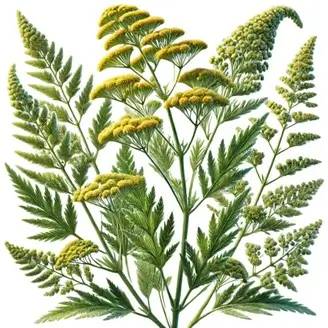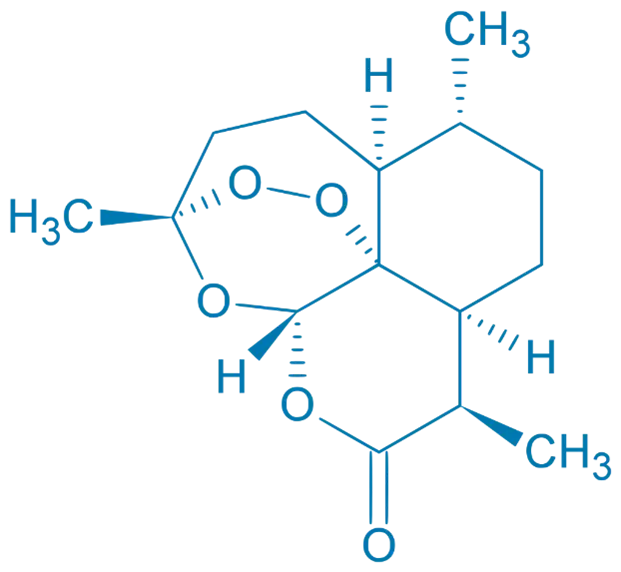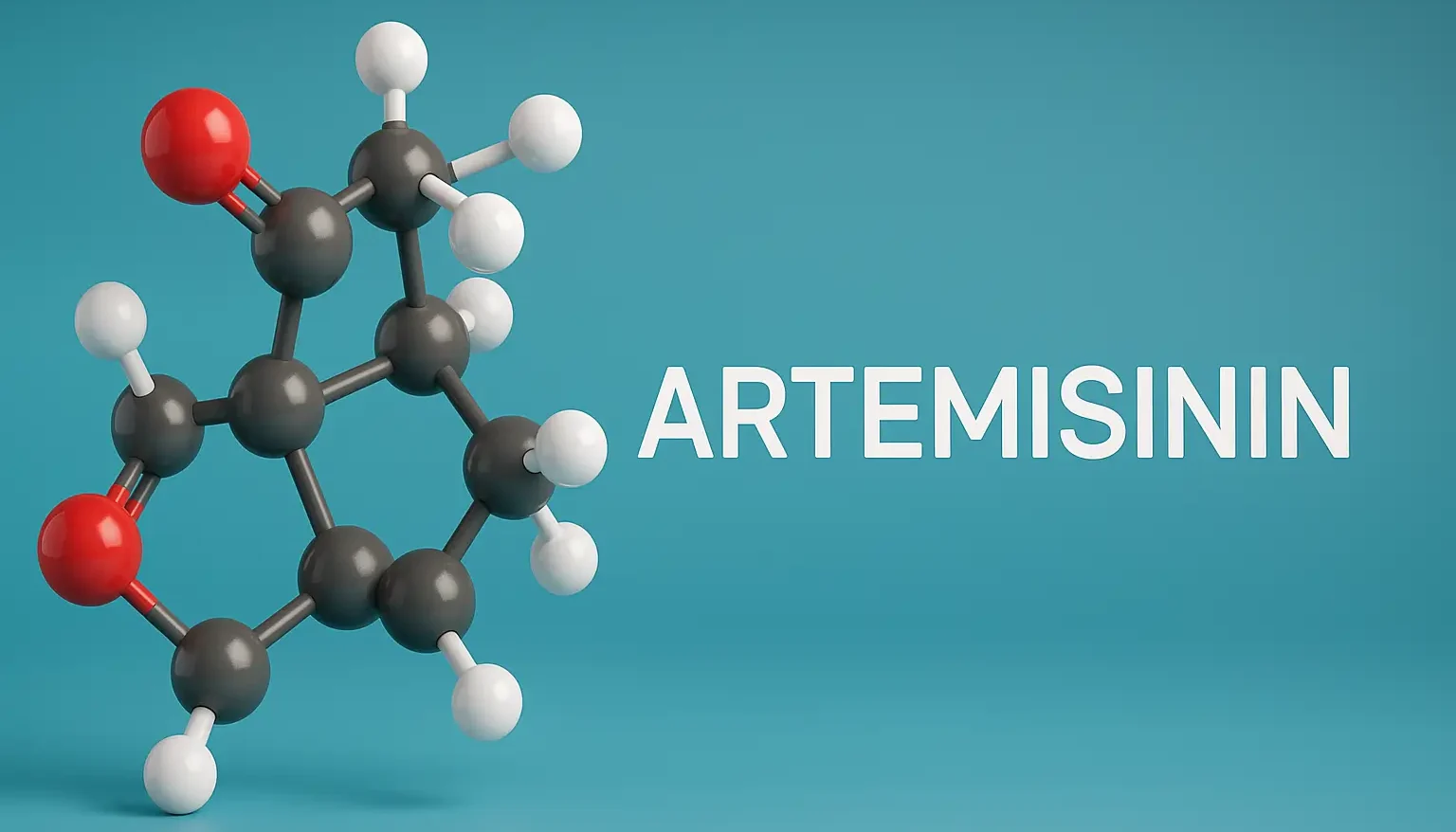Source and Occurrence of Artemisinin

- Artemisinin is a sesquiterpene lactone containing a peroxide bridge, isolated from the sweet wormwood plant (Artemisia annua).
- It is renowned for its potent antimalarial properties.

Isolation
-
Extraction:
- Solvent Extraction: Dried and powdered Artemisia annua leaves are subjected to extraction using solvents like ethanol or dichloromethane.
-
Purification:
- Liquid-Liquid Extraction: Separates artemisinin’s from other components based on solubility differences.
- Chromatography:
- Column Chromatography: Utilizing silica gel or reverse-phase columns to isolate artemisinins.
- High-Performance Liquid Chromatography (HPLC): For higher purity levels.
-
Crystallization:
- Precipitation of artemisinin by altering solvent conditions, followed by filtration and drying.
Advertisements
Identification
-
Physical Properties:
- Appearance: White crystalline solid.
- Melting Point: Decomposes before melting.
- Solubility: Soluble in chloroform, ether, and other organic solvents; insoluble in water.
-
Spectroscopic Techniques:
- IR Spectroscopy: Detects functional groups, especially the characteristic peroxide bridge (~800 cm⁻¹).
- NMR Spectroscopy:
- ¹H NMR: Confirms the presence of specific hydrogen environments.
- ¹³C NMR: Provides detailed carbon framework information.
- Mass Spectrometry: Molecular ion peak at m/z 282.4.
-
Chromatographic Techniques:
- HPLC: Confirms purity and quantifies artemisinin content.
- GC-MS: Sometimes used but can cause decomposition due to high temperatures.
Analysis
-
Quantitative Analysis:
- HPLC with UV Detection: Standard method for quantifying artemisinin levels.
- Spectrophotometry: Less common due to specificity issues.
-
Quality Control:
- Ensuring the absence of impurities that could affect efficacy.
- Verifying structural integrity via spectroscopic data.
Applications and Significance of Artemisinin
- Artemisinin is a cornerstone in antimalarial therapy, especially against Plasmodium falciparum.
- Its derivatives, such as artesunate and artemether, are critical in combination therapies to prevent resistance.

